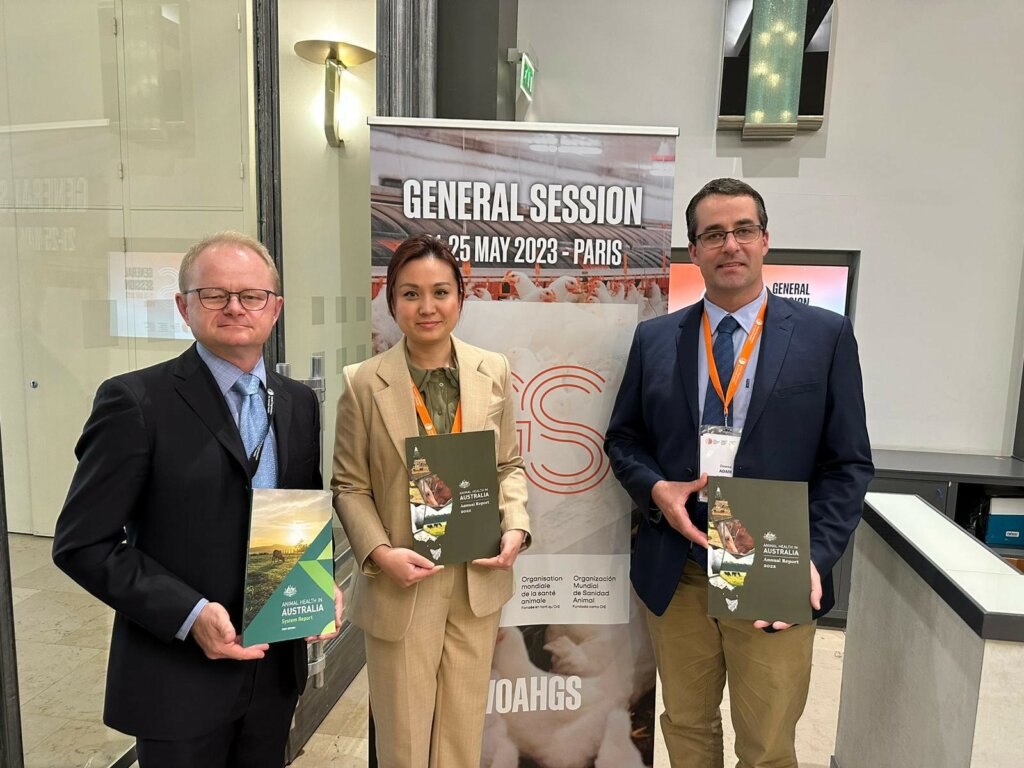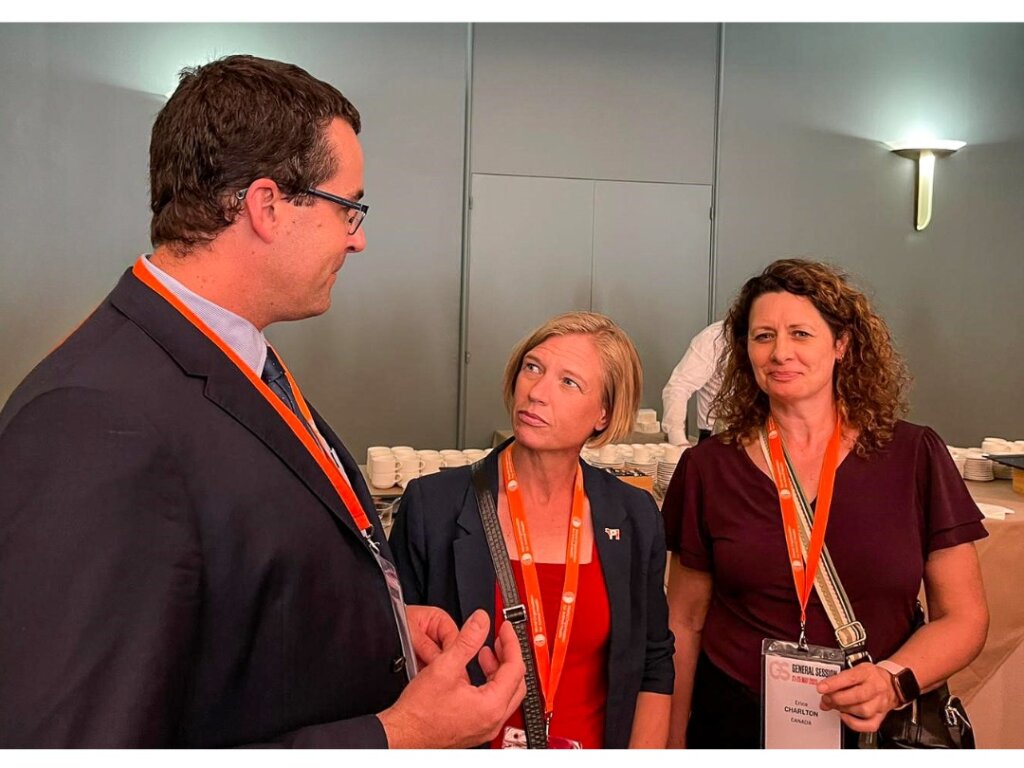Blog from Adam Dawes, WoolProducers Australia
I recently had the opportunity to join the Australian delegation to the 90th General Session of WOAH as a representative of Animal Health Australia’s (AHA) Industry Forum and the Australian wool industry at the invitation of Dr Mark Schipp, Australian Chief Veterinary Officer.
While it was the first WOAH event that I have had the opportunity to attend, the 90th General Session was the first time the event had been held in an extensive face to face format since 2019. Over 1,000 participants coming from 183 of the WOAH member countries, international and regional organisations, observer countries and key stakeholders capitalised on the opportunity to re‑invigorate networks and connections in a manner only possible via face-to-face meetings.
The Australia delegation, led by Dr Mark Schipp, comprised of representative form federal and state government, the Australian Centre for Disease Preparedness (CSIRO) and several industry groups including Wildlife Health Australia, Australian Veterinary Association, Australian Chicken Meat Federation and myself representing AHA Industry Forum and WoolProducers Australia.
Animal Health Forum on Avian Influenza
The general session started with a two day forum to discuss the impacts that high pathogenicity avian influenza (HPAI) was having globally, and share information on management efforts underway and gaps that require attention to manage this disease of global significance.
HPAI has been recorded in over 70 countries globally. Culling and vaccination programmes continue to have a significant impact on food security through the destruction of productive animals and loss of elite genetics because via culling programmes and the imposition international of market access restrictions to prevent further transmission of the disease.
In addition to the impact that HPAI is having on food security, there is growing concern amongst both regulators and the wider community that HPAI could be the source of the next global pandemic, with several instances of transmission from avian species to mammals.
Technical sessions within the HPAI forum discussed surveillance and control programmes, including destruction and vaccination strategies. One theme that emerged from the animal health forum was the need for collaboration and coordination, an issue that WOAH is championing through its desire to strengthen public-private partnerships (PPP). The premise of PPP is that government-industry partnerships are far more effective in preparing for and responding to animal disease outbreaks than each party working in relative isolation to one another. This aligns well with the Australian notion of ‘shared responsibilities’ within our biosecurity system.
The discussions that took place within the animal health forum emphasised to me how lucky we are in Australian to have organisations such as AHA and Plant Health Australia that have supported the PPP in the Australian context for several decades. Mechanisms such as the Emergency Animal Disease Response Agreement and the associated resources and signatory obligations are the envy of many of our international government and industry counterparts. On this point I had extensive discussions with a cohort of industry representative counterparts from Canada, who were very keep to learn from Australia’s experiences in enhancing their own disease preparedness arrangements.


Terrestrial Animal Health Standards Commission
Another key component of the assembly were the sessions relating to the amendment of WOAH’s guiding standards for terrestrial animal health, known by many as the Terrestrial Code. Notable chapters to which Australia made significant contributions under the leadership of Dr Schipp, were those relating to FMD, BSE and Rabies. With all 3 of these diseases being absent from Australia Dr Schipp’s contributions were targeted at ensuring that Australia retained the right to apply import conditions that provided Australia with an appropriate level of protection against incursion of these diseases, while supporting and enhancing market access to facilitate the safe cross-border trade of animals, genetics and animal products.
Side events
I also had the opportunity to attend a briefing on the Global Burden of Animal Diseases (GBAD). The programme is seeking to quantify the economic and societal impacts of various animal diseases with a view to identifying opportunities to reduce these impacts, and in turn improve societal outcomes. The work of GBAD aligns quite well with industry funded work already underway within Australia, such as Meat and Livestock Australia’s Priority list of endemic diseases for the red meat industry
I also had the opportunity to meet with the WOAH PPP team to present the work I had been leading over the past 12 months within the International Wool Textile Organisation Biosecurity and Trade Working Group to develop a Biosecurity Framework on the storage, treatment and certification of greasy wool to mitigate sanitary risks (such as FMD) from countries/regions impacted by such a disease outbreak. The framework is based on the Terrestrial Code and the recent experienced of our South African colleagues, having recently established a domestic process to resume exports following FMD incursions into their ‘free zone’. The framework was accepted and adopted as an IWTO resource for the benefit of the global supply chain. The PPP team were very complementary of the initiative and work undertaken and will look to use it as a positive case study in support of PPP in the future.
While we remain aware and concerned about the threats that exotic pests and diseases present to Australian agriculture and the environment, the biosecurity and animal health systems that we have in place are envied by many of our global counterparts. In order to minimise potential impacts such as an incursion, it will be essential that we continually invest in strengthening the strong government – industry partnership and instil the notion of biosecurity being a shared responsibility. Under this approach it will remain increasingly important that we continually invest to capitalise on opportunities as they arrive.
I would like to express my sincere thanks to Dr Mark Schipp for the invitation to attend WOAH, an experience that will greatly assist with my contributions to Australia’s animal health and biosecurity systems for many years to come.